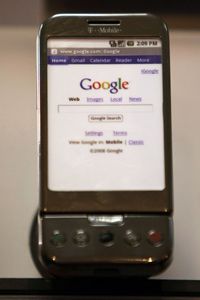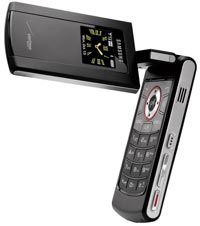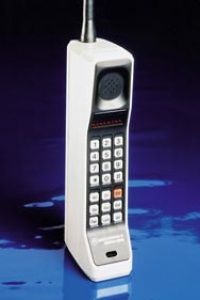
The white iPhone 4 launched in spring 2011. The iPhone is one of the most popular cell phones. See other popular and historic phones on the next pages.
Advertisement

An iPhone 3 in 2008. This earlier model had less talk time and lower quality camera.

The Sony Xperia Play features a 4-inch touch-screen display and runs the Android OS. It can be used as a phone and handheld gaming device.

The Palm Pre uses Palm's Linux based mobile operating system. It has a full QWERTY keyboard and a touchscreen.

The BlackBerry Storm was Research in Motion's (RIM's) first touchscreen phone and was developed as a competitor to the iPhone.
Advertisement

The Samsung Omnia offers Windows Mobile Professional 6.1, so users can use mobile versions of Word, PowerPoint and Excel.

The Android smart phone operating system appeared on several phones in 2009, including the Droid.

Although the Droid didn't destroy the iPhone, it did offer competition with a 5-megapixel camera, touchscreen and slider keyboard.

The HTC G1 was the first phone to feature the Google Android OS. The Android OS requires the user to have a Google account.

The LG Vu supports AT&T Mobile TV, a live mobile broadcast service sent straight to the phone. Turning the Vu sideways makes it a mini widescreen television.
Advertisement

The Samsung Glyde's large QWERTY keyboard slid out for easy typing. It has been replaced by a newer version, the Samsung Rogue.

An employee of Japan's mobile operator KDDI displays the mobile phone 'W62H' produced by Hitachi. The mobile phone can play downloaded movies on its OLED display.

Spring, summer, fall and winter, the Sony Ericsson s500i displayed the appropriate seasonal colors and the phone's button illumination changed to reflect its surroundings.

A model displays LG's Chocolate phone. It went through several design changes, from a slider to touchscreen and featured a music player.

The "flip-and-twist" design of Samsung's Flipshot turns the cell phone into a miniature camera.
Advertisement

This Nokia phone includes a front-facing camera (to the upper left of the screen) for video conferencing.

The Nokia 6555 offered an astonishing 16 million display colors.

The Clarity C900 cell phone has features that may appeal to senior citizens who normally avoid cell phones. It has an oversized screen, large fonts and simple buttons.

Sony Ericsson's 'Full-Change Mobile re' let users change all the surfaces of the phone to their favorite colors and designs.

Hitachi demonstrates its prototype model of a mobile phone that displays the 3D animation for sign language.
Advertisement

NTT DoCoMo employee Tomoko Tsuda displays the prototype model of the polymaer electrolyte fuel cell (PEFC) battery, which charges the mobile phone's lithium-ion battery.

This disposable cell phone allows only outgoing messages and 60 minutes of calling time, but you can throw it away when the calling time is up.

In 2003, Nextel launched the first push-to-talk phone features.

The BlackBerry debuted in 1999 and featured a proprietary operating system that allowed for third-party applications. Many developers still design apps for the BlackBerry platform.

One of the originals: Analog cell phones were born in 1983 when the FCC approved the AMPS standard. Learn more about the history of cell phones and more with How Cell Phones Work.
Advertisement